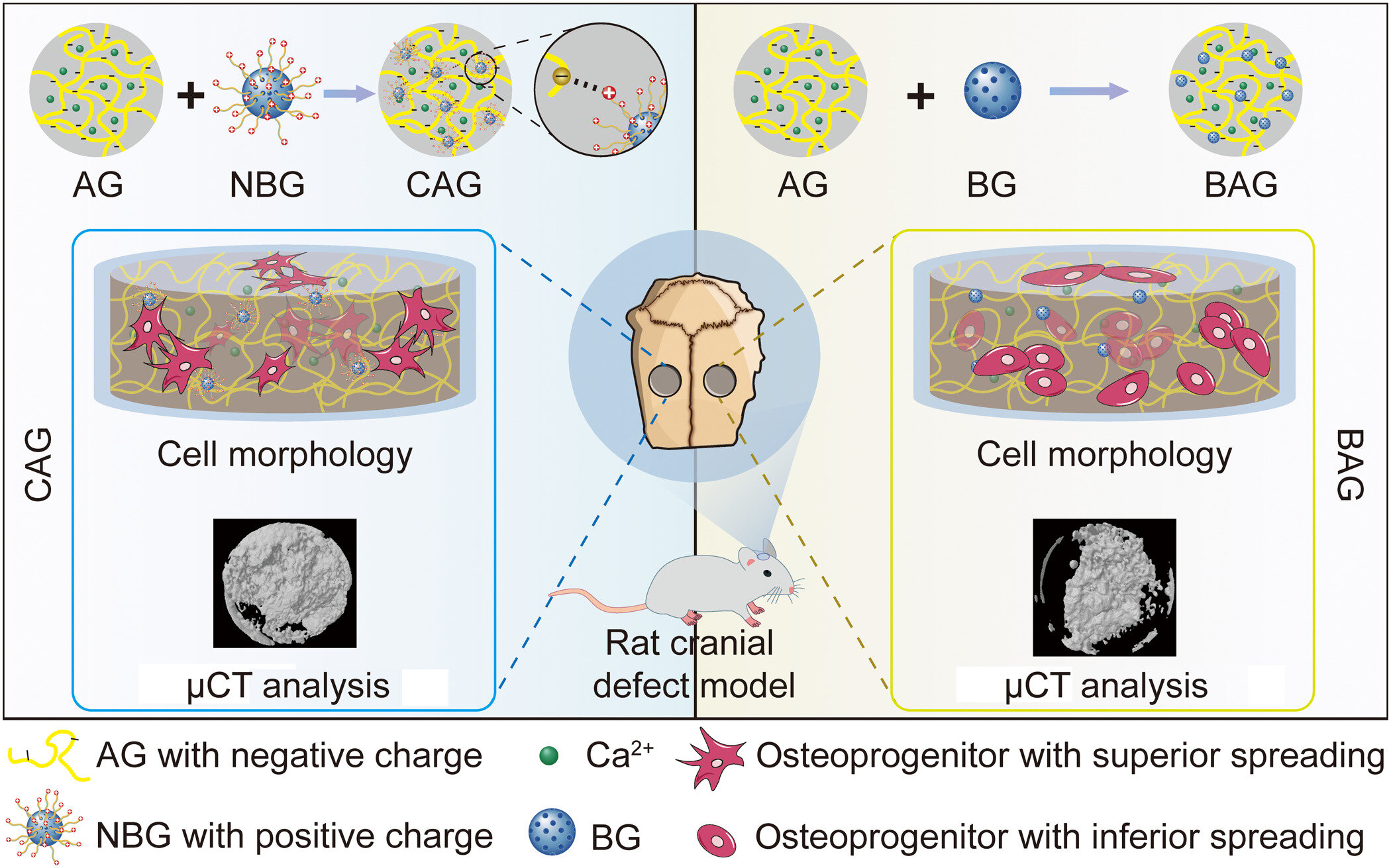A biopolymer hydrogel with amino-functionalized bioactive glass for accelerated bone regeneration
Date: 17.12.2021
Composite hydrogels can incorporate natural polymers and bioactive glass as promising materials for bone regeneration. However, the applications of such constructs are limited by poor compatibility between organic and inorganic phases.
 In a new study now published in Science Advances, Xinxin Ding, and a research team in medicine, in Shanghai China, formed an electrostatically reinforced hydrogel (abbreviated CAG) with improved interfacial compatibility.
In a new study now published in Science Advances, Xinxin Ding, and a research team in medicine, in Shanghai China, formed an electrostatically reinforced hydrogel (abbreviated CAG) with improved interfacial compatibility.
To accomplish this, they introduced amino-functionalized bioactive glass to the alginate/gellan gum matrix. When compared with bioactive glass, the electrostatically reinforced hydrogel indicated a more uniform porous structure with a pore size of 200 µm and an optimal compressive strength of 66 kPa.
Using the reinforced hydrogel, the team promoted the phenotype transition of macrophages and upregulated the osteogenic gene expression of stem cells. They showed how new bone formation was also accelerated in vivo with enhanced biomineralization of the electrostatically reinforced hydrogel, with biocompatibility ideally suited for bone regeneration.
In this way, Xinxin Ding and colleagues showed how improved interfacial biocompatibility between different phases contributed to the improvement of composite hydrogels. The diverse biomaterials enhanced the capacity for bone regeneration and provided a convenient approach to develop new composite hydrogels that can be translated for clinical applications.























